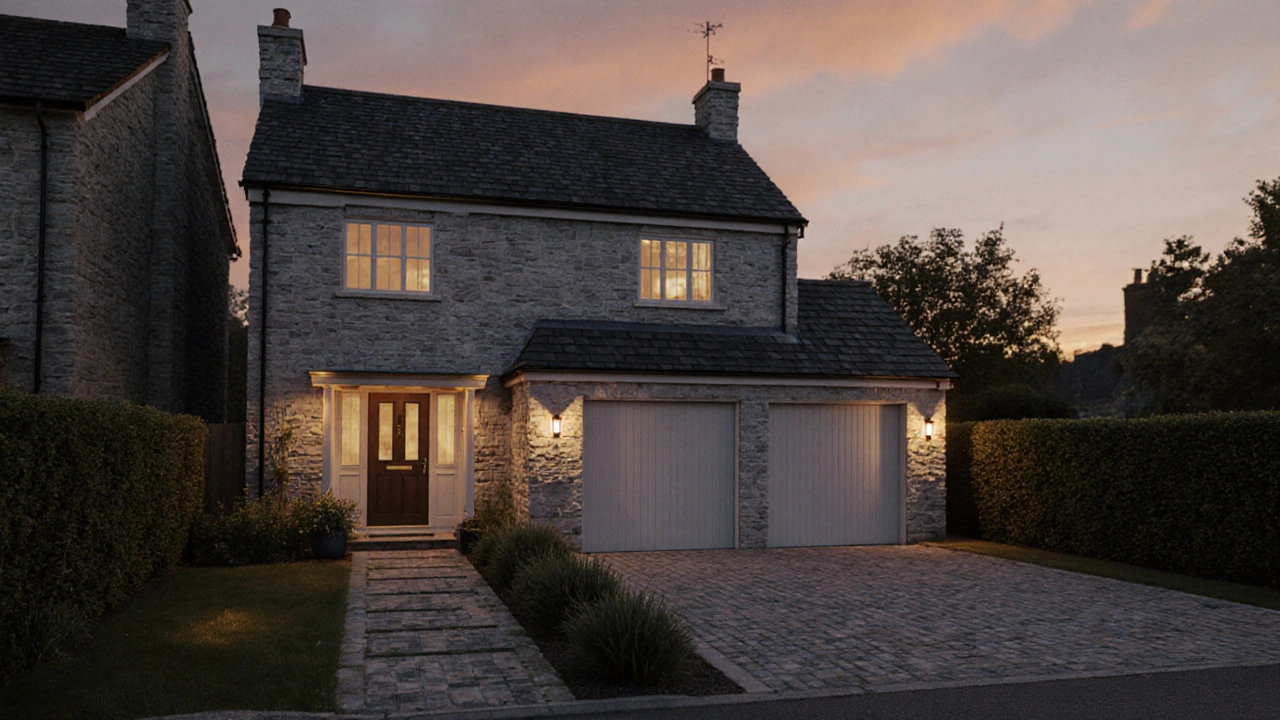Villa Size Calculator & Comparison Tool
Villa Size Calculator
Converted Sizes
Square Meters
Square Feet
Regional Size Benchmarks
| Region | Average Size (m²) | Average Size (ft²) | Typical Features |
|---|
Lifestyle Recommendations
When you start hunting for a villa, the first thing that pops up is the question, "How big should a villa be?" Size matters - it affects price, design, and even the lifestyle you can lead. Below we break down what counts as a villa, the size ranges you’ll meet in different markets, and the practical bits you need to watch when measuring up your future home.
What exactly is a villa?
Villa is a detached or semi‑detached residential property that offers a higher level of space, privacy, and often luxury amenities compared with typical houses or apartments. It originated in the Roman countryside and today the term is used worldwide to describe upscale homes that sit on sizable plots.
How much space does a typical villa have?
The answer depends on where you are looking. In the UK, a villa usually starts at around 90 square metres (≈970 sq ft) of internal floor area. In Mediterranean hotspots like Spain or Greece, you’ll find villas ranging from 150 sqm (≈1,600 sq ft) up to 300 sqm (≈3,200 sq ft). In elite markets such as Dubai or the French Riviera, luxury villas can easily exceed 500 sqm (≈5,400 sq ft) and sit on acres of land.
Key components that make up the total size
- Living area: The main rooms where daily life happens - kitchen, living room, dining room.
- Bedroom count: More bedrooms usually mean a larger footprint.
- Bathroom count: Adds both usable space and resale value.
- Plot size: The land the villa sits on - gardens, pools, parking.
- Ancillary spaces: Home office, gym, guest house, or garage.
Regional size benchmarks
| Region | Average size (sqm) | Average size (sq ft) | Typical features |
|---|---|---|---|
| United Kingdom | 90 - 150 | 970 - 1,615 | Garden, double‑garage, 2-3 bedrooms |
| Southern Europe (Spain, Italy, Greece) | 150 - 250 | 1,615 - 2,690 | Pools, terraces, 3-4 bedrooms |
| Middle East (UAE, Qatar) | 300 - 600 | 3,230 - 6,460 | Private beach, staff quarters, multiple living zones |
| North America (California, Florida) | 200 - 350 | 2,150 - 3,770 | Open‑plan, home theater, 4+ bedrooms |
| Australia (Coastal) | 250 - 400 | 2,690 - 4,300 | Ocean view, indoor‑outdoor flow, 3-4 bedrooms |

How to measure a villa correctly
- Measure the external walls of each floor - this gives you the gross floor area.
- Subtract areas occupied by walls, stairwells, and built‑in services to get net usable space.
- Include any annexes (guest houses, detached garages) if they’re part of the living package.
- Convert the final figure to both square metres and square feet for clarity.
- Verify the plot size through the land registry - this helps you understand outdoor space potential.
Most agents list the villa size as gross floor area, so ask for a breakdown if you need net usable space for interior planning.
What size fits different lifestyles?
Small families or couples: Look for villas in the 90‑150 sqm range. Two or three bedrooms, a modest garden, and a single‑car garage keep costs manageable while still giving you the privacy of a detached home.
Large families or multigenerational households: Aim for 200‑350 sqm. Four to five bedrooms, multiple bathrooms, a separate living wing, and generous outdoor areas enable each generation to have its own space.
Luxury seekers: Anything above 400 sqm usually falls into the luxury category. Expect premium finishes, private pools, smart‑home tech, and extensive grounds. In markets like Dubai, villas can top 1,000 sqm when you add staff quarters and extensive leisure facilities.
Common pitfalls when judging size
- Ignoring plot ratio: A 150 sqm villa on a tiny 300 sqm plot may feel cramped outside, while the same house on a 1,200 sqm plot feels spacious.
- Overlooking ceiling heights: Higher ceilings add a sense of volume without increasing floor area.
- Forget about future needs: If you plan to add a guest house or expand the garden, consider the zoning allowances in the local planning authority.
- Misreading advertised figures: Some listings quote total built‑up area, which includes garages and basements, inflating the perceived living space.

Tips for negotiating based on size
- Benchmark the villa against regional averages from the table above - if it’s smaller than the norm, you have leverage.
- Ask for a detailed floor‑plan with room dimensions; spot any unusually small rooms that could affect usability.
- Compare the plot size to neighboring properties - a larger garden can justify a higher price.
- Check local planning regulations for possible expansions - the potential to add 50 sqm can increase the villa’s future value.
- Use the cost per square metre as a negotiation metric; a lower price per sqm often signals room for discount.
Quick checklist before you sign
- Confirm gross vs. net floor area.
- Validate plot size through land registry.
- Cross‑check bedroom and bathroom counts against your needs.
- Assess any extra spaces (garage, pool house) for inclusion in the price.
- Review local zoning rules for potential future extensions.
Frequently Asked Questions
What is the minimum size for a property to be called a villa?
There’s no legal definition, but most markets treat any detached home over 90 sqm (≈970 sq ft) with at least two bedrooms and a private garden as a villa.
Does a larger plot always mean a bigger villa?
Not necessarily. Some villas sit on modest plots but are built upwards with multiple floors, while others spread out over large gardens with a modest footprint.
How do I convert square metres to square feet?
Multiply the number of square metres by 10.764. For example, 150 sqm × 10.764 = 1,614 sq ft.
Are villas in the UK generally cheaper per square metre than those in Spain?
Yes. In 2025 the average price per sqm for a UK villa is around £4,200, while a Spanish Mediterranean villa averages £2,800 per sqm, reflecting lower land costs and differing market dynamics.
Can I add extra rooms to an existing villa?
Usually, you need planning permission from the local council. Check the allowable plot ratio and any height restrictions before you start redesigning.
Understanding the size spectrum of villas helps you set realistic expectations, budget wisely, and avoid surprises later on. Whether you’re hunting for a cosy 90 sqm retreat or a sprawling 600 sqm palace, the right measurements are the first step toward finding a home that truly fits your lifestyle.

